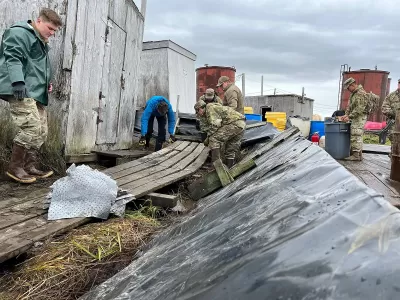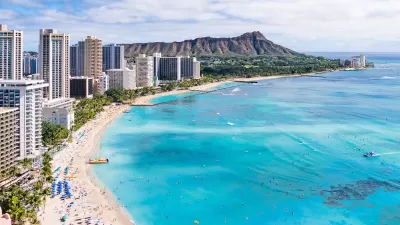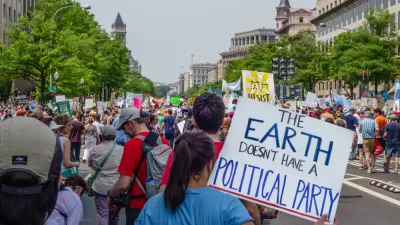Increasingly threatened by the impacts of climate change and extreme weather, many Native Alaskan and other indigenous communities will have to relocate—and soon.

An article by Emily Schwing in High Country News describes the challenges facing Native villages in Alaska and other parts of the United States, where “Melting permafrost, increasing wildfire threats, severe drought and other climate-change related phenomena mean dozens, perhaps hundreds, of small, predominantly Indigenous communities across the nation may need to move.”
The Alaskan village of Newtok only had a nomadic population until the mid 20th century, when federal authorities told Yup’ik residents that they had to settle permanently to access federally funded schools. “But the land in Newtok has never been all that stable: Since the 1950s, the banks of the Ninglick River have been eroding at rates as high as 70 feet per year.” As Schwing notes, the community has been painfully aware of this. “For more than two decades, Newtok has been trying to plan for a full relocation.”
The federal government has started awarding grants to communities needing to relocate. But with a total cost estimated at $120 million or more for the Newtok relocation, how far can a $25 million grant, awarded by the federal government through the Bipartisan Infrastructure Law, go?
The village faces with a slew of costs that won’t be covered by the federal grant. Patrick LeMay, the Newtok relocation project manager, estimates a need of $8 million for additional housing, plus $60 million for a school, $2.3 million for a health clinic, and other infrastructure needs. As the impact of climate change intensifies, more communities will need assistance.
FULL STORY: How far can $25 million go to relocate a community that’s disappearing into Alaska’s melting permafrost?

Trump Administration Could Effectively End Housing Voucher Program
Federal officials are eyeing major cuts to the Section 8 program that helps millions of low-income households pay rent.

Planetizen Federal Action Tracker
A weekly monitor of how Trump’s orders and actions are impacting planners and planning in America.

Ken Jennings Launches Transit Web Series
The Jeopardy champ wants you to ride public transit.

‘Smart Surfaces’ Policy Guide Offers Advice for Building and Maintaining Urban Tree Canopies
Healthy, robust tree canopies can reduce the impacts of extreme heat and improve air quality.

New Jersey Lawsuit Targets Rent-Setting Algorithms
The state of New Jersey is taking legal action against landlords and companies that engage in what the state’s Attorney General alleges is illegal rent fixing.

Washington Legislature Passes Rent Increase Cap
A bill that caps rent increases at 7 percent plus inflation is headed to the governor’s desk.
Urban Design for Planners 1: Software Tools
This six-course series explores essential urban design concepts using open source software and equips planners with the tools they need to participate fully in the urban design process.
Planning for Universal Design
Learn the tools for implementing Universal Design in planning regulations.
Heyer Gruel & Associates PA
Ada County Highway District
Institute for Housing and Urban Development Studies (IHS)
City of Grandview
Harvard GSD Executive Education
Toledo-Lucas County Plan Commissions
Salt Lake City
NYU Wagner Graduate School of Public Service





























